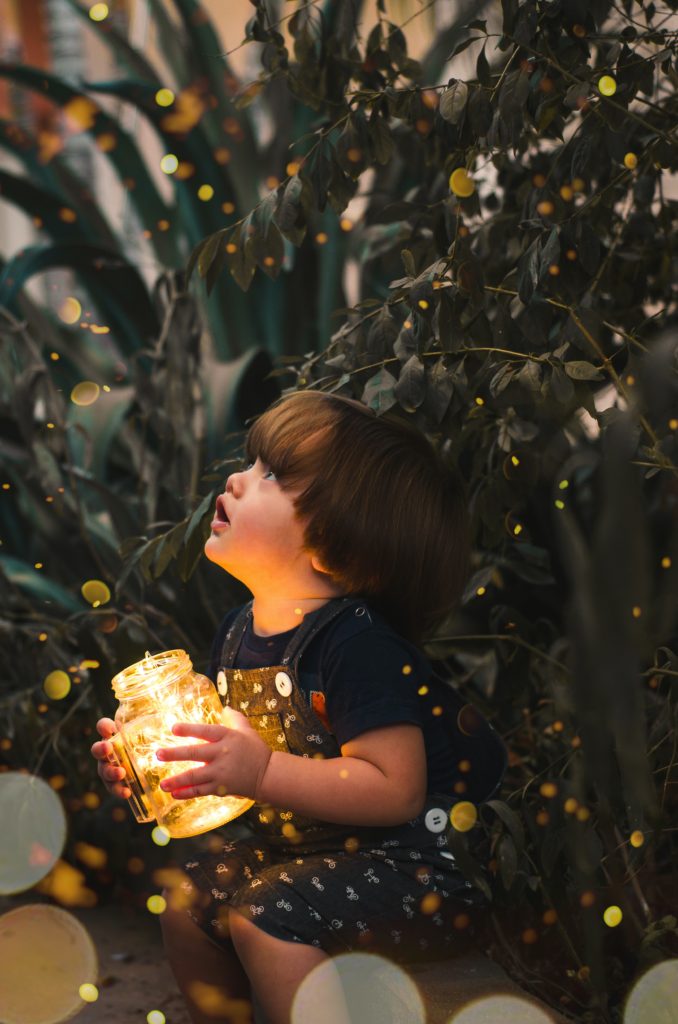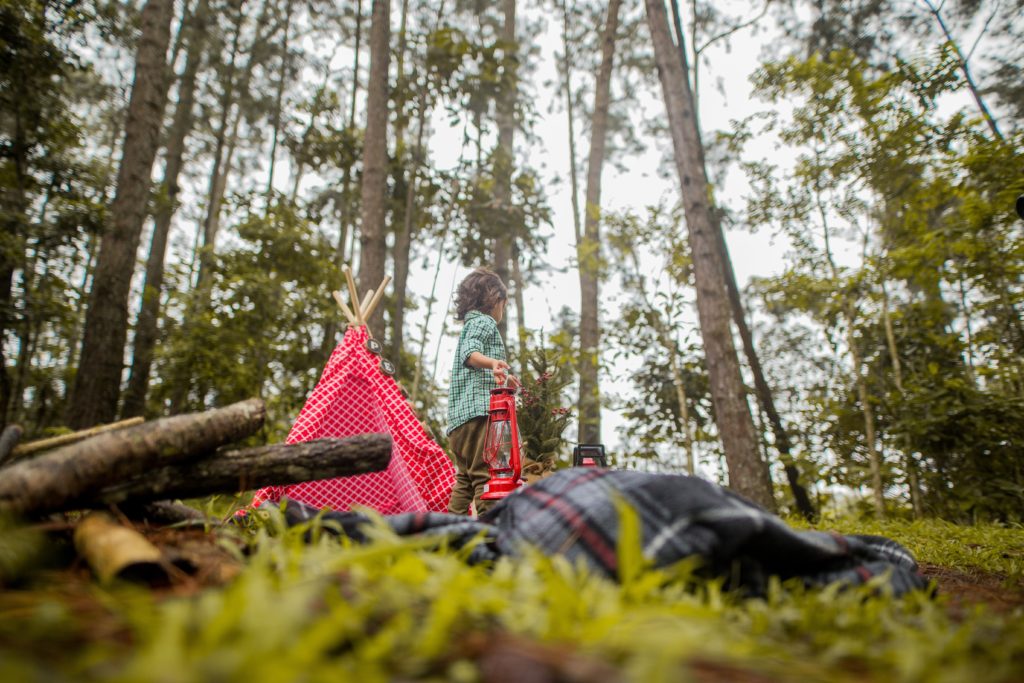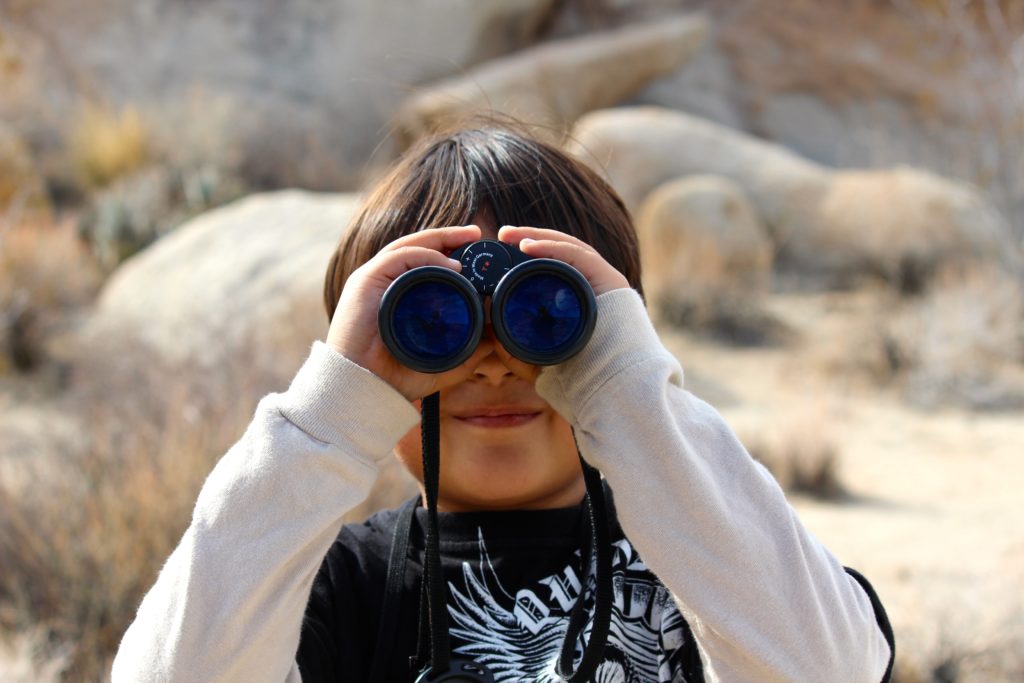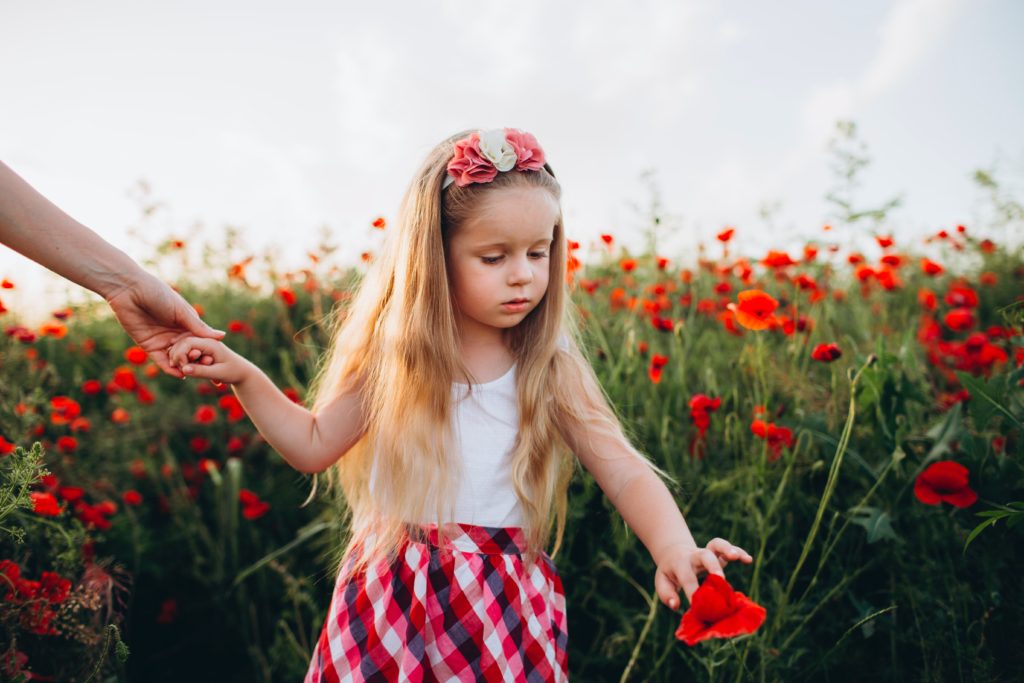It’s a familiar scenario: you try to limit your kid’s screen time, but you’re too overwhelmed and exhausted for a battle. Besides, sometimes it’s nice to have a “digital babysitter” when you just need a moment to yourself. Some daily device time is okay for kids—even necessary, as many right now are learning virtually because of the pandemic. But even before COVID-19, studies were showing that kids get too much technology and not enough outdoor time. How does this affect them long-term? And how can parents find creative ways to get their kids out in nature more often? We’ve got your answers here.
The Many Benefits of Nature

It likely won’t surprise you that there are many physical and psychological benefits from regularly spending time in nature. Both kids and adults need it, as it’s proven to quell feelings of anxiety, fear, and stress and boost positive emotions like contentment, awe, and joy. In one study, the participants that spent as little as two hours a week in green spaces reported better overall health and a sense of well-being. Spending time in nature has been shown to strengthen our immune system, improve cognitive functions like memory, lower our heart rate, and help our bodies make vitamin D (effective for preventing cancer, osteoporosis, and heart attacks). It also helps us connect to our environment, including plants and animals, as well as to our neighbors and community as a whole—all of which are important developmental lessons for children.
What is Nature Deficit Disorder?

The term “Nature Deficit Disorder” was coined by Richard Louv in his 2005 book Last Child in the Woods: Saving Our Children from Nature-Deficit Disorder. Louv—a journalist, book author, and co-founder of the Children & Nature Network—defines Nature Deficit Disorder as “the human costs of alienation from nature,” due to an increase in urbanization and agricultural, social, and technological changes of the past three decades that have led us to move indoors. He cites several studies that prove this lack of nature has led to a diminishment of our senses, attention difficulties, increased obesity, and higher rates of physical and emotional disorders. And, says Louv, nowhere are these problems more prevalent than in our children.
But not only are there health benefits to consider, but also environmental ones. In an interview with UC Berkley’s Greater Good Magazine, Louv asked the compelling question, “If nature experiences continue to fade from the current generation of young people, and the next, and the ones to follow, where will future stewards of the earth come from?”
It’s not all bad news though—Louv and other nature advocates remind us that this problem is easily reversible. In fact, there are many manageable ways to give our kids (and us ourselves) more quality time in nature.
How to Get Your Kids Back to Nature

Camping
Whether it’s at a campsite or in your own backyard, sleeping under the stars is a refreshing change from the hectic lifestyle that even kids lead these days. Young ones will love sleeping in a tent or camper, and the adventure of it taps into their natural need to explore. Leave your phones at home (keeping one for emergency) and hike, watch wildlife, have family sing-alongs, and simply enjoy spending time together.

Nature Walks
A nature walk is a great way to teach kids about their natural environment. Even a neighborhood walk or quick stroll can do wonders for their physical and mental health. It’s also a great way to help your children open up to you about what’s on their minds. Kids today are under a lot of stress, and its not always easy for them to express themselves. In fact, psychologists have found that the simple act of walking with someone can drastically improve interpersonal communication. Walking and talking encourages kids to open up in ways they can’t do as readily in a “face-to-face” posture.
If you are visiting or living in the Big Bear Lake area, join Chirp for a live nature walk! Check out our schedule of live and virtual Bird Walks here.

Backyard Birding
You don’t have to go far to enjoy the wonders of nature—just step into your backyard! Getting kids involved with nature-related hobbies, like bird feeding and bird watching, gives them a dose of nature between longer outdoor sessions. Take some time to help them identify the birds you see at your bird feeders. You can even them their own field guide to keep track. Put them in charge of refilling the feeders, helping them appreciate taking care of wildlife and the environment. Consider buying a bird-feeding kit with binoculars and fun activities to help your kids engage through interactive tools.
More Fun Nature Activities for Kids

The Chirp Nature Center has lots of fun nature-themed stuff for kids, including:
- Outdoor Activity Set
- Bird Bingo
- The book The Lost Art of Reading Nature’s Signs: Use Outdoor Clues to Find Your Way, Predict the Weather, Locate Water, Track Animals—and Other Forgotten Skills
More Nature and Health Resources

Parents: do you want to learn more about nature’s effect on our health, and fun ways to connect with nature? Check out some of these books from the Chirp store:
- The Nature Fix: Why Nature Makes Us Happier, Healthier, and More Creative
- The Wildflower’s Workbook: A Journal for Self-Discovery in Nature
- How to Be a Wildflower: A Field Guide
- What It’s Like to Be A Bird
Visit the Chirp Nature Center as a Family!
Are you a Big Bear local or planning a visit? Stop by the Chirp Nature Center to say hi! We have tons of fun stuff and activities for the whole family.


